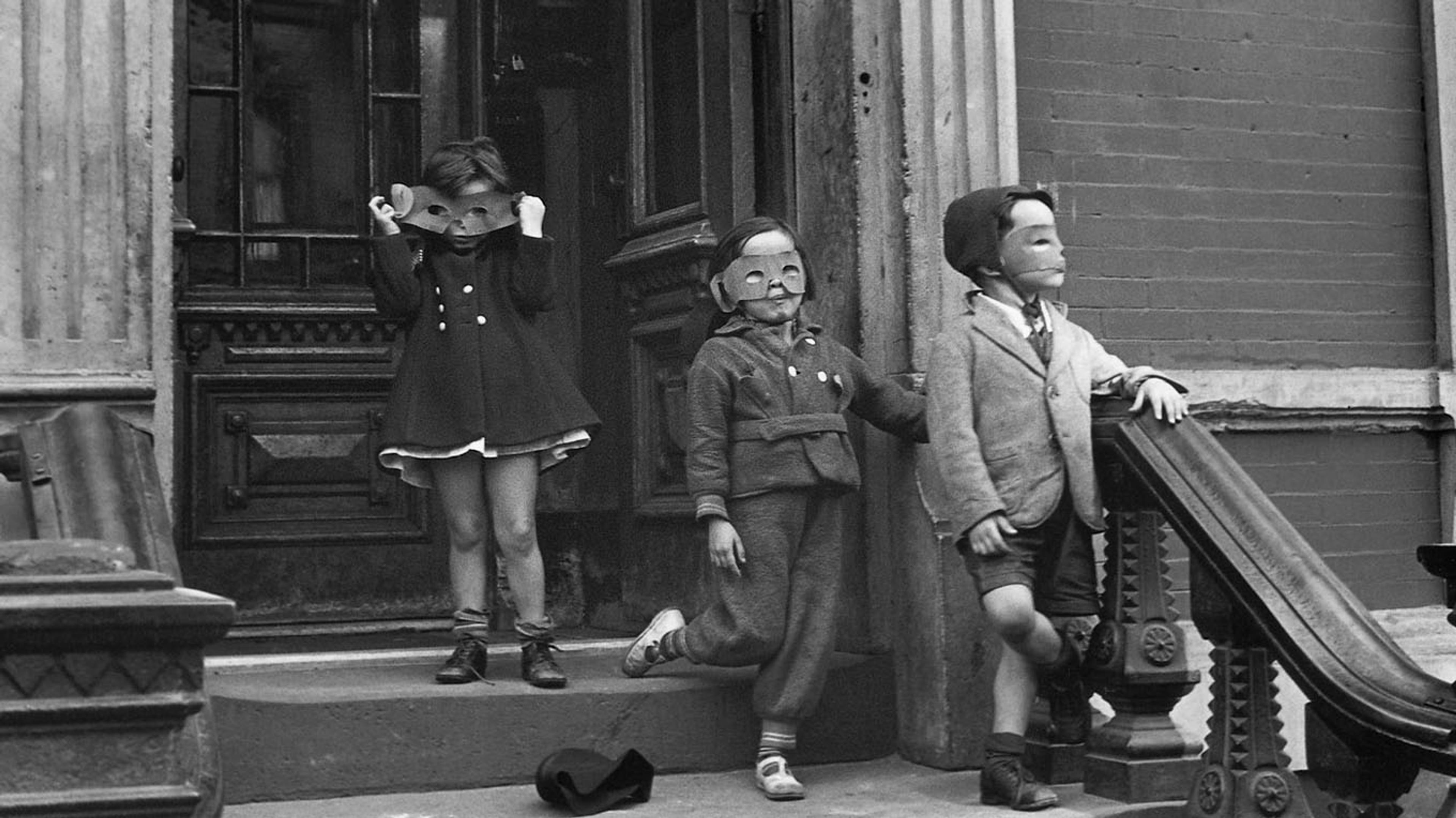Helen Levitt
Urban Lyrics

Helen Levitt is one of the 20th century’s foremost photographers and a pioneer of the “street photography” movement. Urban Lyrics presents an extensive photographic retrospective of Helen Levitt‘s oeuvre. The exhibition consists of over 120 photographs, the majority of which are vintage prints.
instantaneous and poetic meditations
During the 1930s, Helen Levitt began photographing with a small format camera newly manufactured by Leica, in her hometown of New York. The Leica enabled Levitt to photograph the street life in Brooklyn and East Harlem undetected, because the Leica’s viewfinder made it possible for her to point the camera in one direction while photographing in another. The exhibition features photographs and slides from New York (1959 – 1966) as well as photographs from Mexico. In the Street, a documentary about Helen Levitt, will be on view in addition to books and magazines in which Levitt’s work was published.
Helen Levitt’s photographs are instantaneous and poetic meditations on daily life, images that we can identify with even today. Levitt was influenced by Henri Cartier-Bresson, Walker Evans, and Ben Shahn, and in turn, Levitt herself inspired several photographers, among them Swedish photographers Christer Strömholm and Walter Hirsch.
Helen Levitt was, during her lifetime, only one of a few female photographers working with street photography; in fact, it was not until the 1940s that women photographers were common. In addition, the development of street photography, as a genre, was partly due to the development of the Leica. Before the emergence of small format cameras, it was difficult to photograph spontaneously. The technology was too slow and cameras too cumbersome. The economic boom, after the Great Depression, also contributed to the rise of street photography. With renewed prosperity came an increase in leisure time allowing more people to take up photography.
Urban Lyrics is curated by Jorge Ribalta
Street photography
To categorize an image as a “street photograph” one must look at the choice of motif. In the images we see the public space, it can be a group of people on the street, a couple at a coffeehouse or a lone man on a bench. In the images we observe a moment frozen in time. We wonder who is depicted in the photograph. We wonder what has happened before and after the click of the shutter. Wandering through the city is a key element in the process. It is during these walks the photographer is able to explore the details, movements, and emotions that are present in the environment. The difference between a documentary photographer and a street photographer is subtle. A documentary photographer often has an underlying goal, namely to depict something, while the street-photographer is a spontaneous observer who captures a moment during his/her excursion.
Maria Patomella
Curator, Fotografiska